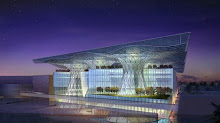In the last decade, the world is seeing the true effects of its current living style and the results are not promising. It would require 2.3 earths to support the current rate of natural resource usage and steadily increasing population on the planet. The earth’s eco-system is dying; dead spots are appearing in the oceans, more and more animals are going extinct everyday, and the amount of being pollution produced is climbing every year. As more and more studies are coming to a conclusion, it is becoming obvious that change needs to happen and happen fast. Green technologies are being studied and developed to begin reversing the damage being done to the earth everyday and still allow people to live the lifestyle they’ve become accustomed to.
The focus of this report is to determine how feasible a net zero community is with the use of renewable energy technologies and the costs/pay-off costs of implementing those technologies. Net zero means; the amount of energy provided by on-site renewable energy sources is equal to the amount of energy used by the building. This means that having a net zero community would need to have the means of creating its own energy to match the amount of energy being used through renewable energy sources (more on that below). The means to create an entirely net zero community exists, but does the cost involved actually make the community a feasible idea.
The report will be focused on a site called, “Copper Fields” located behind Grand Forks in British Columbia. This report will take the existing site and, following the masterplan of Copper Fields, determine the average amount of energy the new development will require to determine how much renewable energy would be required to support it. Once the amount of renewable energy is determined, the next step would be to apply appropriate renewable energy technologies around the site. By discovering just what the site can create in terms of renewable energy, the masterplan may have to change slightly or even greatly to achieve the goal of having a net zero community.
Currently there exist several methods of creating energy from renewable energy sources: biofuel, biomass, geothermal, hydro power, solar power, tidal power, wave power, and wind power. The problem is not every site can use all of the mentioned methods. Not every site has access to massive winds or the ocean or even a large exposure to the sun. This creates a challenge in implementing renewable energy sources into communities and actually making them effective. On top of that, the environmental impact these technologies could have also needs to be taken into account. Destroying a river to create a small hydro dam has a negative impact on the environment and takes away from the whole point of using renewable energies.
I would recommend using a variety of different renewable energy types within the site and maximizing the layout of the site to take full advantage of these renewable energy sources. Wind turbines could be placed on the surrounding mountains, geothermal could be used in a community wide effect, and every house could incorporate solar power into its design. It may turn out that the last 10%-20% of the required energy would be far more effective to purchase from off-site green sources instead of being generated within the site.
Wednesday, April 8, 2009
Subscribe to:
Post Comments (Atom)



No comments:
Post a Comment